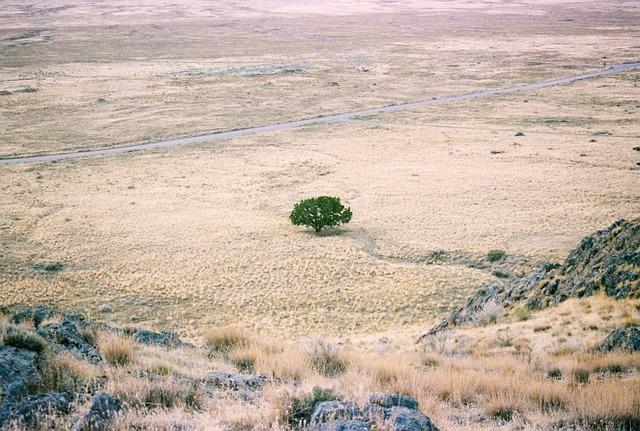Advent
As Southern Africa grapples with the relentless affect of extended drought prerequisites, the Global Group for Migration (IOM) has initiated a important reaction initiative around the moast affected areas. The thorough record, “IOM Southern Africa area Drought Reaction | section 1 – Affected Districts in mozambique, Zimbabwe, Zambia and Malawi,” launched in September 2024, supplies an in depth evaluation of the humanitarian panorama formed through this environmental disaster. Highlighting the urgency of the location, the record outlines the intensive repercussions of the drought on meals safety, livelihoods, and water get right of entry to, exacerbating the already inclined prerequisites of native populations. With the collaborative efforts of more than a few stakeholders, together with govt businesses and non-governmental organizations, the IOM seeks to deal with the instant wishes of communities impacted through the drought, whilst additionally laying the groundwork for long-term resilience and restoration methods.This newsletter delves into the findings of the record and examines the important reaction movements taken to relieve the hardships confronted through hundreds of thousands throughout Mozambique, Zimbabwe, Zambia, and Malawi.
IOM Southern Africa Area Drought Reaction Evaluation
The IOM (Global group for Migration) has initiated an pressing reaction to deal with the overpowering drought disaster sweeping throughout Southern Africa,specifically impacting Mozambique,Zimbabwe,Zambia,and Malawi. with essential assets stretched to their limits, our center of attention in Section 1 shall be at the districts maximum suffering from this environmental crisis. The target is to offer instant aid and enhance to inclined communities, fostering resilience towards the worsening affects of weather exchange. Key movements come with:
- Water Provide Interventions: Provision of secure ingesting water thru borehole rehabilitation and water trucking.
- Dietary Reinforce: Distribution of meals support and dietary dietary supplements to deal with malnutrition.
- Livelihood Recovery: Imposing agricultural restoration methods to lend a hand households regain self-sufficiency.
- Well being Products and services Get admission to: Mobilizing cellular clinics to offer hospital therapy and well being schooling.
Collaboration with native governments and NGOs is very important to maximise enhance and be sure that help reaches those that want it maximum. Our efforts shall be guided through steady checks to watch the evolving scenario, permitting us to regulate our methods successfully. Beneath is a short lived evaluation of the drought affect around the goal districts:
| District | Inhabitants Affected | Severity Stage |
|---|---|---|
| Maputo | 150,000 | Top |
| Harare | 200,000 | Serious |
| Lusaka | 100,000 | Average |
| Blantyre | 180,000 | Top |

Have an effect on Evaluate on affected Districts in Mozambique, Zimbabwe, Zambia, and Malawi
The hot drought in Southern Africa has profoundly affected more than a few districts throughout Mozambique, Zimbabwe, Zambia, and Malawi. In those areas, water shortages have ended in devastating affects on agriculture, meals safety, and livelihoods. Key findings from the affect overview point out that farmers are experiencing important declines in crop yields, with staple meals reminiscent of maize and beans being critically impacted. Financial actions, specifically in rural spaces the place agriculture is the mainstay, had been hampered, leading to greater vulnerability amongst native populations. The next demanding situations had been known:
- Agricultural Decline: Lack of plants and cattle because of inadequate rainfall.
- Meals Lack of confidence: Escalating malnutrition charges, specifically amongst youngsters and inclined teams.
- Water Shortage: Lowered get right of entry to to secure ingesting water assets.
- Financial Pressure: Greater poverty ranges as households battle to maintain their livelihoods.
Additionally, the socio-economic ramifications prolong past instant meals shortages. Many households had been compelled to dump cattle or different property, resulting in long-term repercussions on their monetary balance.The overview additionally highlighted that those affected districts are grappling with a surge in migration, as people search higher alternatives in other places, additional straining city assets.An analysis of enhance wanted unearths the next priorities for reaction:
| Precedence Wishes | Intervention Sort |
|---|---|
| Emergency Meals Help | distribution of meals provides and diet enhance |
| Water, Sanitation, and Hygiene (WASH) | Provision of unpolluted water and sanitation amenities |
| Livelihood Reinforce | Coaching methods and fiscal help to rebuild agriculture |

Humanitarian Wishes and Vulnerabilities of Drought-Affected Populations
The continued drought has critically compounded the demanding situations confronted through inclined populations throughout Southern Africa, specifically in Mozambique, Zimbabwe, Zambia, and Malawi. Communities reliant on subsistence agriculture are grappling with acute meals lack of confidence,as crop yields dwindle and cattle suffers from the loss of water and grazing land.The affect of drought isn’t uniform; marginalized teams, together with girls, youngsters, and the aged, enjoy heightened vulnerabilities, exacerbating pre-existing inequalities. The location is additional annoyed through restricted get right of entry to to well being services and products and sanitation, resulting in greater illness occurrence and malnutrition amongst affected communities.
Mitigating the humanitarian wishes of those populations calls for a multi-faceted method. Key priorities come with:
- Emergency meals help to curb malnutrition charges.
- Water, sanitation, and hygiene (WASH) interventions to verify get right of entry to to secure ingesting water.
- Livelihood enhance tasks aimed toward diversifying source of revenue assets for affected households.
- Well being services and products to deal with the bodily and psychological well being repercussions of extended drought prerequisites.
The next desk outlines the estimated selection of people suffering from drought around the 4 international locations:
| Nation | Affected inhabitants |
|---|---|
| Mozambique | 1,500,000 |
| Zimbabwe | 2,000,000 |
| Zambia | 1,200,000 |
| Malawi | 800,000 |

Coordination Efforts and Partnerships in Reaction to the Disaster
The coordination efforts in line with the continuing drought disaster in Southern Africa have concerned a extensive vary of stakeholders, together with govt businesses, global organizations, and native NGOs. Collaborative tasks had been a very powerful in making sure a swift and environment friendly reaction to the desires of affected communities. Key partnerships had been established to facilitate useful resource sharing and fortify the affect of aid efforts. Significantly, the involvement of the United international locations, regional our bodies, and native communities has been instrumental in aligning humanitarian methods and imposing efficient answers. the efforts are focused round:
- Information Sharing: Actual-time knowledge assortment and change amongst companions to evaluate the severity and repercussions of the drought.
- Logistical Reinforce: Coordination of provide chains for meals,water,and clinical provides to probably the most affected spaces.
- group Engagement: Involvement of native leaders and organizations to be sure that support addresses the precise wishes of communities.
Moreover, steady conversation amongst stakeholders has fostered a unified option to cope with each instant humanitarian wishes and long-term resilience-building efforts. Multi-sector collaborations have centered more than a few facets of restoration, reminiscent of making improvements to agricultural sustainability and enhancing water resource management. Thru those partnerships, assets are being mobilized for complete drought mitigation methods.The present section additionally emphasizes:
| Center of attention Space | Key Movements |
|---|---|
| Agricultural Reinforce | Distribution of drought-resistant seeds and farming apparatus. |
| Water Get admission to | Drilling boreholes and restoring water provide techniques. |
| Well being Products and services | Cellular clinics and well being schooling campaigns. |

Suggestions for Sustainable Answers and Resilience constructing
To forge a trail in opposition to sustainable answers and fortify resilience amongst communities suffering from drought, a number of key methods should be applied. Integrating native wisdom into making plans processes is a very powerful, as indigenous practices continuously supply insights into efficient useful resource control. Moreover, strengthening group participation in decision-making fosters a way of possession and dedication to tasks that cope with their explicit wishes.Centered capacity-building methods can empower native stakeholders, offering them with the abilities required to regulate assets correctly and reply successfully to long run climatic adversities.
Investments in climate-resilient infrastructure are crucial to mitigate the affects of drought. This contains the development of dams and rainwater harvesting techniques, designed to fortify water get right of entry to all over sessions of shortage. Moreover, imposing varied agricultural practices can toughen meals safety and livelihoods. Communities must be inspired to undertake plants which can be drought-resistant and to make use of leading edge tactics reminiscent of intercropping and agroforestry.Setting up early warning systems too can play a very important function in making ready communities for coming near near droughts, taking into account well timed interventions and minimizing the adversarial results on each other folks and the surroundings.

Long run Outlook for Drought Control in Southern Africa
As weather variability intensifies, the desire for proactive and sustainable drought control methods turns into more and more pressing in Southern Africa. Governments and organizations are anticipated to concentrate on a multi-faceted method that emphasizes group resilience, adaptive agricultural practices, and built-in water control. This comes to strengthening native capacities thru centered coaching and schooling tasks that empower citizens to regulate their assets successfully, fostering a deeper figuring out of drought-related dangers and adaptive measures. Collaborative efforts amongst regional governments, NGOs, and global businesses shall be a very powerful in growing frameworks that enhance each instant aid and long-term strategies.
Taking a look in opposition to the long run, the function of era in drought control is predicted to develop considerably. Far off sensing and information analytics can give real-time insights into water availability and crop well being, taking into account well timed interventions. Moreover, the implementation of early caution techniques shall be essential in forecasting drought occasions and mitigating their affects. Crucial parts for a success adaptation will come with:
- Funding in infrastructure to toughen water garage and distribution.
- Promotion of drought-resistant plants to verify meals safety.
- Bolstered cooperation throughout borders for shared water assets.
those collaborative efforts are anticipated to yield advantages that reach past instant drought reaction, laying the groundwork for a extra resilient socio-economic landscape throughout Southern Africa. through incorporating leading edge answers and prioritizing group engagement, the area can flip the demanding situations posed through weather develop into alternatives for sustainable development.

Ultimate Remarks
the continuing drought disaster in Southern Africa has necessitated a strong reaction from the Global Group for Migration (IOM) because it embarks on Section 1 of its humanitarian efforts throughout Mozambique,Zimbabwe,Zambia,and Malawi. As September 2024 unfolds,the pressing want for help within the affected districts serves as a grim reminder of the vulnerabilities confronted through communities on this area. Thru coordinated motion and centered interventions, the IOM objectives to relieve the hardships imposed through this serious climatic match, offering crucial support and enhance to these in dire want.
As the location continues to adapt, it stays a very powerful for stakeholders, together with governments, ngos, and the global group, to watch and adapt their methods to successfully fight the affects of the drought. Via fostering collaboration and sharing assets, there may be hope that the affected populations can’t most effective live on this disaster but additionally construct resilience towards long run environmental demanding situations. The street forward would require sustained dedication and innovation, however with concerted efforts, restoration and rebuilding can start to take form in those inclined spaces as soon as once more.
Source link : https://afric.news/2025/03/04/iom-southern-africa-region-drought-response-phase-1-affected-districts-in-mozambique-zimbabwe-zambia-and-malawi-september-2024-reliefweb/
Creator : Isabella Rossi
Submit date : 2025-03-04 12:00:00
Copyright for syndicated content material belongs to the connected Source.



